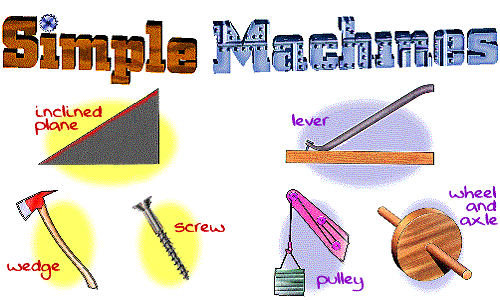15,886 total views, 3 views today
Machines are energy-using tools with many parts used by people to perform an action. They are used instead of manpower to make work done easier, faster and with much accuracy. Machines save both time and human energy. They are used everywhere and for different purposes. We have machines in houses, farms and in all forms of industries. When machines are used, force is applied and there is/are energy conversion.
Little input force is needed by simple machines to produce great output, the output force >input force. The concept “mechanical advantage” is used in simple machines. Mechanical advantage (MA) is the ratio of the output force and the input force, MA= Output ÷ Input. Generally, there are six classes of simple machines. They are the lever, pulley, screw, wheel and axle, inclined plane and wedge.
Read more about advantages of using machines here or read about disadvantages of using machines here
- The Lever
A lever is a simple machine and one of the tools used in the olden days. It has a pivot or fulcrum on which a load is being moved with the exertion of force. Common examples include the scissors, pliers, sugar tongs, stapler, bottle opener, nutcrackers, wheelbarrow, crowbars, fishing rods, hammer, see-saw, door handles, among others.
A lever is characterized by the fulcrum (pivot), load and effort. The position or the arrangement of the fulcrum, lever and effort dictates the class of a lever. Levers generally have three classes which are; first-class lever, second class lever and third class lever.
(i) First Class levers
In this class, the fulcrum is in the middle of the load and effort. There is no exact position of the load or effort. Each of the two can be at one of the two ends. Levers that fall in this category include the scissors, pliers, hammer.
(ii) Second Class Levers
Here, the load is in-between the fulcrum and the effort. Examples include the nutcracker, wheelbarrow, opener, and stapler.
(iii) Third Class Levers
The effort is between the fulcrum and the load in third class levers. Examples are sugar tongs, fishing rods etc.
- The Wheel and Axle
Wheels are circular in shape and they rotate. Axle, on the other hand, is a rod placed at the centre of a wheel. Axles allow the rotation of the wheel. Examples are the car wheels, bicycle wheels, gears. They are also found in machines that make circular motion such as the fans.
- The Pulleys
Pulley has a wheel and an axle in it but it is different from the wheel and axle because of a rope that connects the wheel and an axle. Some pulleys use chain or other forms of chords instead of the rope. Two pulleys are sometimes connected together to make work done easier or to move or lift heavy weight. Pulleys move loads both in a linear (up and down) and oscillatory (front and back) motion. They are used in industries to carry cargos, for raising and lowering flags, in elevators and also in window blinds.
- The Inclined Plane
They are slant, horizontal and sloppy in nature with one end higher than the other end. This simple machine lift objects higher and to move things from the lower side to the other side, which is usually higher. They are used to move heavy objects to and from the vehicles. Other examples are the ladder, stairs, escalators, wheelchairs among others.
- The Wedge
Wedges are used to hold things together, to cut, break things into two or to separate things from each other. Examples are the office pins, needle, ax, nails, staple, shovel, and knife.
- The Screw
A screw is helical and a form of an inclined plane with a threaded shank and a point used to drive screw into a material, wood or a soft object and also used to hold things together. It is inclined in nature because it also moves from a low position to a higher position. Examples are bolts, faucets, drill etc.
Read more about advantages of using machines here or read about disadvantages of using machines here
If you enjoy this article please drop a comment
If you find this article interesting, please like us on Facebook and Twitter, you should also share it by clicking the buttons below to enable other people to benefit from it.

This article was very interesting and you should make more articles like this. I feel that you should give access to people who want to make articles to put articles in your website. I want to see this improvisation by feb 29th . Thank you for your corporation-Arshiya J